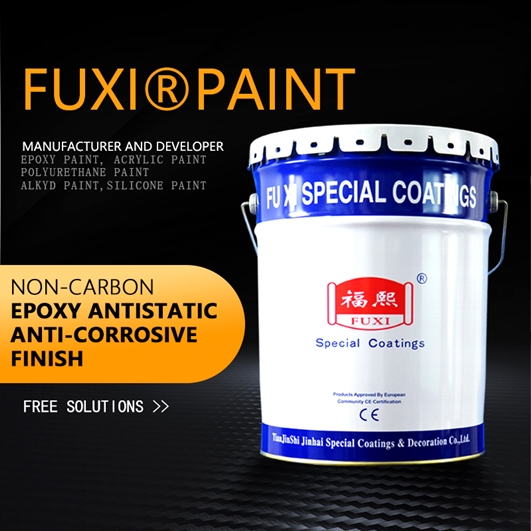Non-Carbon Epoxy Antistatic Anticorrosive Finish
(2021年12月12日)https://www.paint-in-china.com/products/non-carbon-epoxy-antistatic-anticorrosive-finish/
Our company was founded in 1994, specializing in the manufacture of heavy-duty industrial primer paint and coating, such as zinc-rich paint, epoxy paint, alkyd paint, polyurethane paint, polyurethane paint, high-temperature resistant paint, acrylic paint and so on.
The non-carbon topcoat epoxy antistatic anticorrosive finish is a clear epoxy top coat that prevents the generation and accumulation of static electricity charge on the inner wall of a steel storage tank and has good anti-corrosion properties. It contains special conductive materials, anti-rust pigments, curing agents and additives. It is characterized by low surface electricity resistance, good electrical conductivity, quick elimination of static charge accumulation, good resistance to media (water, kerosene, diesel, gasoline, etc.) corrosion, suitable for inner walls of oil storage tanks, and another antistatic area in electronic industry.
Advantages of Non-Carbon Epoxy Antistatic Finish
The film with excellent corrosion resistance and stable resistivity.
Excellent resistance to penetration and without polluting to oil.
Excellent heat resistance (≤200 ℃)
Tough film with abrasion resistance and good workability
Specification of Non-Carbon Epoxy Antistatic Anticorrosive Finish
TypeSolvent
Solid Content70%
Mixing RatioTwo components Part A: Part B=5:1 by weight
Dry Film Thickness50μm per coat
Specific Gravity1.3 kg/Liter
Coverage Rate (Theoretical)0.11kg/m2/50μm 0.085L/m2/50μm
Drying TimeTemperature10℃20℃30℃
Dry to touch2.5hrs2hrs1.2hrs
Dry Hard18hrs12hrs10hrs
Package24kgs for one kit: Part A 20kg and Part B 4kg
Why must the inner wall of the oil tank be coated with antistatic paint?
In the process of filling and discharging, the relative movement of the oil product with the tank body will increase the static voltage on the inner wall of the oil tank.
When liquid oil is flowing, filtering, mixing, spraying, flushing, filling and shaking, the electrostatic charge generation rate is higher than the leakage rate, and the electrostatic charge will also accumulate.
When the energy of the accumulated electrostatic discharge is greater than the minimum ignition energy of the combustible mixture, and the oil vapor and air mixture in the discharge gap is within the explosive limit range, combustion and explosion will occur.
- このできごとのURL:



コメント